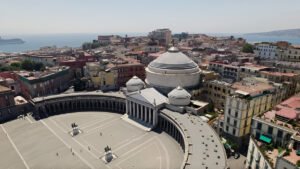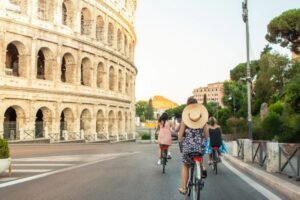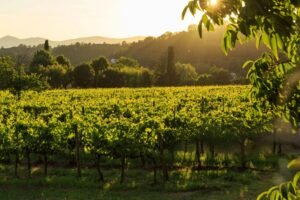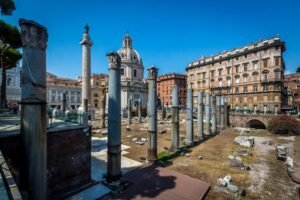Top Things to Do in Turin, Italy | Discover the Top picks
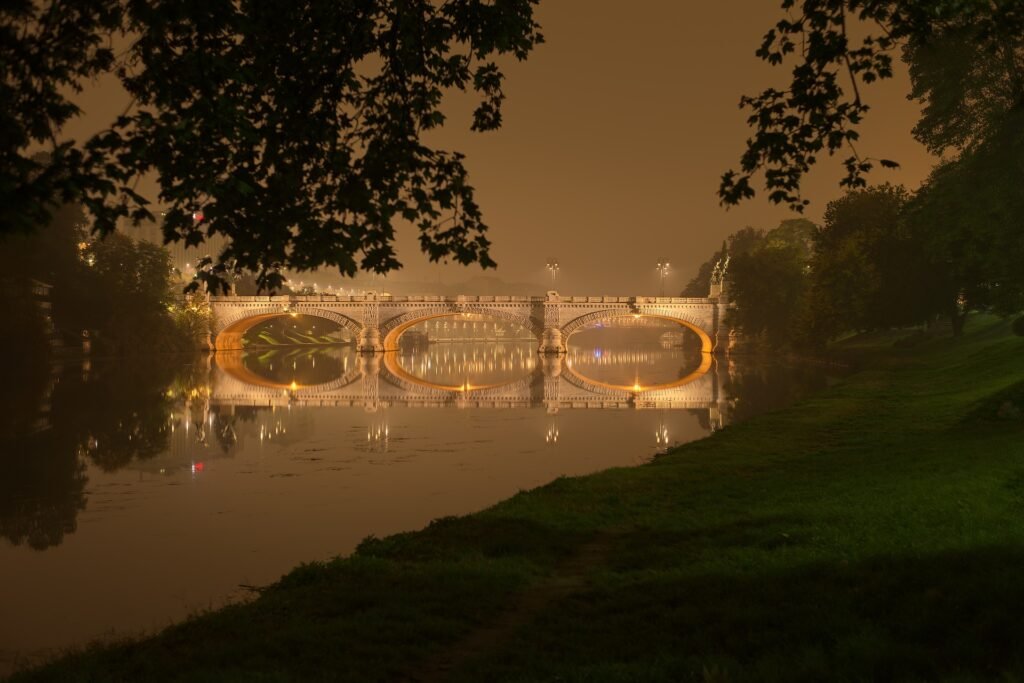
First time in Turin and don’t know what to see? Keep on Reading this blog, and I’ll discuss the most beautiful sights that will make your visit unforgettable!
Turin, Torino—no matter what you call it, it’s a city of grand piazzas, palaces, parks, porticos, cars, castles, coffee, chocolate, museums, and markets.
And let’s not forget the vermouth! We did our best to see it all. The Mole Antonelliana is undoubtedly the most recognizable building in Torino. Originally designed to be a synagogue, it was the tallest brick building in Europe when it was completed in 1889.
Unlock the secrets of Turin, or Torino—Italy’s hidden gem nestled in the Italian Alps. Here are the Top things to do in Turin Italy.
So, Let’s start with Top things to do in Turin Italy.
piazza castello turin
We’re now discussing Piazza Castello, the main square of the city. Here, you’ll find the rich history of Turin. The square was built at the end of the 16th century and the beginning of the 17th century in the late Mannerist style, and its uniformity remains intact to this day.
the Marvel Gate, designed in the Neoclassical style. It separates Castle Square from the Royal Square. At the top of the gate are two guardian statues, and in the back, you can see the Royal Palace. This palace was the residence of the royal family from when they moved here in 1563 until 1946, when the people of Italy voted for the Republic.
You might not believe me because there’s no façade, but if you look up, you’ll notice the dome of the church. This is the Church of St. Lawrence, dedicated to St. Lawrence and commissioned by the royal family.
The interior of the church is breathtaking, showcasing the typical Baroque style. Look up at the marvelous dome—it’s made of 16 crossed bands that create a star pattern. The Soriana windows allow light to flood in, eliminating the need for additional windows. The architect of this church was Guarino Guarini. Construction began in 1666 and was completed in 1680.
Piazza Castello gets its name, of course, from the castle in the center. This medieval castle dates back to the 13th–15th centuries. What’s unique about it is that it was transformed into a palace. The façade you see here was designed by Filippo Juvarra at the beginning of the 18th century for the second Royal Madam.
Who were the Royal Madams? They were duchesses who became widows and ruled as regents for their children, who were too young to govern. They didn’t want to stay in the Duke’s Palace, so they had this castle restored and transformed into a palace. That’s why it’s now called Palazzo Madama.
piazza carignano turin
We’re now ccin Piazza Carignano—Carignano Square. Palazzo Carignano, one of the finest examples of Baroque architecture, designed by Guarino Guarini in the 17th century. It was built for the Carignano family, a branch of the House of Savoy.
The façade is adorned with intricate decorations and beautiful curved windows that represent the importance of the Carignano family. Their contributions to culture, politics, and intelligence are reflected in the architectural splendor of this building.
At the bottom of the square, you’ll find the historic ice cream shop Peppino. It was here that the famous pinguino—the first chocolate-covered ice cream on a stick—was invented. This delicious treat has become a symbol of Italian creativity and is beloved by many.
Next to the ice cream shop is the Carignano Theater, a masterpiece of 19th-century design. It has witnessed countless performances and remains a cherished cultural landmark to this day.
Piazza San Carlo
We’re now discussing Piazza San Carlo, Turin’s “living room.” This elegant square was built in the 17th century and has long been a place to welcome important guests.
At the center of the square stands the statue of Duke Emanuele Filiberto of Savoy, known as “The Iron Head,” a symbol of Turin’s history. It commemorates his triumph in bringing the ducal seat back to Turin from Chambéry.
From Piazza Castello to Piazza San Carlo and along Via Roma, you’ll find one of the main streets of the city, envisioned by the Savoy family in the 17th century. This elegant street is lined with beautiful arcades and high-end shops, making it a popular destination for both shopping and strolling.
Via Garibaldi, a pedestrian street, starts from Piazza Castello and runs straight through the historic heart of the city. Along this street, you’ll notice uniform buildings designed in the 18th century under Savoy rule, showcasing Turin’s refined urban planning.
the Four Seasons: the Fountain of the Four Seasons, a stunning masterpiece. The fountain depicts the four seasons—Spring, Summer, Autumn, and Winter—through intricate sculptures. Each figure represents the characteristics of its respective season, capturing the essence of nature in a unique way.
As we continue, we’ll notice that the fountain is dedicated to Victor Emmanuel II, the first king of unified Italy. His image is depicted in the statues and symbols that commemorate his leadership, especially during the Battle of Novara, which played a crucial role in the Italian unification.
Now, let’s head towards Palazzo Ceriana, a remarkable building designed by Carlo Pietro for the Ceriana family. This family was prominent in the banking and silk industries. The palace is a perfect example of the Baroque style and stands out with its beautiful marble portal.
Turin Porta Palazzo Market
The Porta Palazzo Market offers a unique way to experience Turin’s vibrant food scene. Imagine exploring the largest market in Europe, buzzing with over 1,000 vendors, all eager to showcase their mouth-watering goods.
Whether you’re a devoted foodie or simply curious about Italian cuisine, this is the place to be. Wandering through the market, you’ll find a treasure trove of local delicacies, fresh produce, cheeses, meats, and more—everything you need to dive into the heart of Italian food culture.
Turin Porta Palazzo Market
Fresh produce and local delicacies await you at the Porta Palazzo Market. Take your time to explore the bustling stalls and strike up conversations with the friendly vendors.
As you tour the market, indulge your senses in the irresistible aroma of freshly made pasta sauces and marvel at the craftsmanship of handmade cheese wheels. The vibrant atmosphere is an unmissable experience for anyone eager to immerse themselves in the heart of Turin’s culinary culture.
Villa della Regina
Did you know that in the hills above Turin, there’s a wonderful royal residence with an astonishing view? It’s Villa della Regina, the Queen’s Villa. Let’s go in and check it out together.
The original name of the building was Vigneto del Cardinale Maurizio, a member of the Savoy family. He was working in Rome and wanted to have a villa similar to the ones he admired there. The construction began in 1615, and the architect was Ascanio Vitozzi.
From here, you can enjoy a spectacular view of the city. The carriages would come directly from the city center and arrive right at the main entrance.
Now, we’re at the main entrance, with two lateral staircases that lead up to the central room. Behind me is the main fountain, decorated with shells and black-and-white stones, giving the impression of being inside a cave. This is a perfect example of the Italian garden style, and we have another beautiful example behind the villa.
Now, we’re in the upper part of the villa’s gardens. Behind me is the large fountain, where water flows down to the various fountains throughout the garden. Above this fountain, there’s another large decoration with statues, and at the very top, you’ll find a crown and the symbol of the Queen. This is a tribute to the first Queen of the Savoy family, who gave the residence its name.
Porta Palazzo
The door palace market is the biggest open-air market in Europe. The market was originally stable, as Becky wrote in the titles, in order to satisfy and impact the data. The cholera spread from the city after the fall of administrators. Descendants said it trolled beads 6 with foot instead of bowels in the square, which is the center of Saisera workshop dei Hera.
The market is infected and right outside the city center, where crows are enough for Sisma Tua tennis and Nave dei sport. Plus, it’s not just a market; it’s a melting pot of the 20th century, a source of Salford country at times.
Of Bahia Web, BIC Automotive Industries offers job opportunities. After the eighties, Nord Verfica from China and Fondo Media Front Office introduced the people mover for life opportunities. This provided opportunities for the next generation. Many of these people have job market opportunities to start a new life and heritage.
Many cultural mixes were created by Frank Allers, by brakes, by Francis, and by free traditions, in line with the chickens coming from every way. A dessert of the Central Market in Turin, or Central Market Fiore in English, Usino Goretti in the building.
Design by Italian architects Fuksas, originals by indoor clothing market of Sformato Reali and Tris in Florence Hickman, Central Square with all the crashbox of food science. It is also possible to bike mills in this way, where people can experience the freshness of fruit and vegetables at El Prat, the sold-out outdoor market. Goodbye to very important chefs in the center.
Eldridge Bar for office beers will make a lot of the ball singer spread, which is for all the people to join in Tuscia for the experience of the Central Market in Turin.
Egyptian Museum
Today, we want to share with you the Egyptian Museum in Torino, one of the most visited museums in all of Italy. The museum was founded in 1824 and is, in fact, the oldest museum in the world purely dedicated to Egyptology. With over 30,000 artifacts, it is considered the second most important collection of Egyptology in the world, after the Egyptian Museum in Cairo.
The collection covers a time period starting with the Paleolithic Era, also known as the Old Stone Age, all the way to Late Roman Egypt, from the third to fourth centuries of the Christian era. One artifact considered particularly important in this museum is the statue of Ramses II, dating back 3,500 years.
There are many interesting objects in the museum. The exhibition starts with the oldest items and moves forward in time. I personally enjoyed the exhibition of the royal statues from the period of the New Kingdom, a period of time between the 16th century BC and the 11th century BC. One could easily see the refinement of the statues, exhibited in a large dark hall, spotlighting these beautiful ancient artifacts.
I learned a peculiar fact. Did you know that the official portrait of a pharaoh was not really an authentic representation of the pharaoh’s physical features? It was not meant to be a physical resemblance.
Rather, it was a sort of signature, a message. The image, the facial expression, and the reproduction of the body were thus a message to the public about the inner characteristics and values of each pharaoh, not actually how they looked in reality.
One statue that particularly caught my attention was the Statue of Three Persons. I then read that it was the Statue of Ramses II seated between the gods Amon and Mut, from the 13th century BC.
The Nuvola Lavazza
Born into the second Lavazza in the Aurora district, the building’s design echoes the shape of the clouds in Italy. The name and even the flow shape reflect the moment of the clouds. This building belongs to Lavazza Company, which produces the famous Lavazza brand of coffee, Italy’s best-selling coffee since the 1950s.
There are many factories in this complex temple when it comes to the whole electric Company ward where it’s been functioning already for many decades. Original structures from the Adobe Nanking century still stand in this area. And finally, all are in Fortino della Mazza, where the family itself resides.
This complex encapsulates a perfect example of industrial reuse, wherein the temple is to hold to the electric Company ward and original structures starting from the Adobe Nanking century. All together, it finds itself in the Fortino della Mazza, wherein the family will reside.
The bottle design and Erie stations reflect the American style in overalls in the courtyard, which dates back to the 17th century, with works by Arctic Studio and Cino Zucchi. In reality, the whole complex, advised by friends, has become an office building, large and decided in style, blending Feng Shui with the use of glass and metallic decorations.
The height and architecture share the decided languid feel of famous chef Federico Zanasi’s bistrot, which fuses cooperation with Lavazza’s public garden, where tours stand.
The beautifully decorated marble, 23 years and counting, highlights the design and the specific intent to offer free access or use for the citizens of Turin. It underlines the link between Lavazza Company and its cultural history, providing a stimulating journey to explore the origins of the wonderful Italian espresso.
Gallery of Modern and Contemporary Art
Hello, now we are sharing the Gallery of Modern and Contemporary Art. First of all, we must say that Turin was the first city in Italy to establish a collection of Contemporary Art back in 1895.
The collection now counts more than 45,000 pieces and includes important Italian artists such as Ettore Colla, Amedeo Modigliani, and Giorgio de Chirico, as well as foreigners like Pablo Picasso and Francis Picabia. Of course, the street you see behind me is also a piece of art. It was created in 2011 by Giuseppe Penone, in honor of the one-hundred-and-fiftieth anniversary of the unification of Italy.
It’s a very interesting show titled ‘New Metaphysical and Contemporary Art.’ It’s a dialogue between Giorgio de Chirico and contemporary artists who were inspired by him, especially after the 1960s. In fact, there’s also a dialogue between de Chirico and the Surrealists, with artists like Salvador Dalí, who considered de Chirico one of his key inspirations. But we will also see during our visit how Michelangelo inspired de Chirico as well.
Cinema Museum
If you find yourself in Turin, you’ve got to check out the Cinema Museum inside the incredible Mole Antonelliana Tower. This place is not only a symbol of the city, but also home to one of Italy’s most important museums. Picture this: you walk in and dive headfirst into the captivating world of film.
They’ve got a mind-blowing collection of movie artifacts, cool technology, and tons of memorabilia. You’ll totally geek out! And don’t forget the elevator tour—it’s like a roller coaster with epic views of Turin. Plus, you’ll learn about how this place started as a synagogue and became a monument celebrating Italian unity.
Beer & industrial architecture in the liberty
Monica is looking at the two buildings in the San Donato neighborhood, near the Disney board of development, which dates back to the banking era.
Vice AMS Mall manufacturers are located in front of Conceria Fiorio, with works that Spillini is interested in, in a somewhat traditional form. This area was one of the key locations for the dyers’ district in the past. Justine BIC System Tray structures reinforced the building, and it was developed further later on.
The warehouses and tanneries were built later, in the early 20th century, showcasing architectural styles that bridged two different phenomena. One of the most important artists in the Italian Art Deco style is the artist whose work you notice from the decorative details in the frames, signs, and faces of Florence.
Paul Beel’s designs include Hughes’ secret-based national liberation motifs, featured on the front page of the liberation committee’s publication.
Rise in misery with time past, present, and ice cream. Who is infected by time, he and Goat Hélène Prochet invented Gianduiotto, the famous Cerini Sciacca. We also had some Bruno receiver brewery Mesker.
Meanwhile, Enzo continues to create and guide the neighborhoods’ entry into freeware. There is also the Piazza dei Mestieri restaurant and brewery. So, if you want a fun weekend or a check-out of 3, you can try BMV and Juan’s creations.
Royal Palace of Turin
The Royal Palace of Turin is an absolute delight waiting to be explored. This architectural marvel served as the historical residence of the Duke of Savoy and his family, and it truly showcases the splendor of neoclassical and Baroque design. Inside, you’ll be awestruck by the sheer grandeur that awaits you.
Explore the palace’s expansive halls filled with extraordinary collections and marvel at its lavish Baroque-style apartments, complete with exquisite period furnishings from different time periods.
Palazzo Madama, Turin
Palazzo Madama is situated in Turin, Northern Italy. It was the first Senate of the Italian Kingdom and takes its traditional name from the embellishments it received under two queens of the House of Savoy.
The history of the palace dates back to the beginning of the 1st century BC. The site was originally occupied by a gate in the Roman walls, from which the Circus Maximus of Augusta Taurinorum (ancient Turin) departed. Two of the towers, although restored, still testify to this original nucleus.
When in Turin, make sure to visit the magnificent Palazzo Madama. This place is not just a royal palace, but a living testament to the country’s alluring history. Set within a medieval castle, this palace was cleverly integrated into Turin’s ancient Roman gates.
The genius behind its design, Filippo Juvarra, created a Baroque façade that will leave you in awe of its artistry. Step inside and get ready to be transported back in time as you explore the halls adorned with intricate details. The atmosphere is palpable, making it impossible not to feel the weight of history on your shoulders.
Basilica of Superga
Nestled in the hills of Turin, the Basilica of Superga beckons with its grandeur. This spectacular Baroque-style church holds a special place in Italy’s religious history, attracting pilgrims from near and far.
The Basilica of Superga is more than just an architectural masterpiece—it is also associated with a tragic event that occurred in 1949 when a plane carrying the entire Torino football team crashed into the nearby mountainside.
When you visit, take in the awe-inspiring views from the hilltop location and admire the intricate details of the Basilica. Explore the serene surroundings offering solace and tranquility. This site offers not only a spiritual experience but also a piece of Turin’s rich history.
Basilica of Superga
Nestled in the hills of Turin, the Basilica of Superga beckons with its grandeur. This spectacular Baroque-style church holds a special place in Italy’s religious history, attracting pilgrims from near and far.
The Basilica of Superga is more than just an architectural masterpiece—it is also associated with a tragic event that occurred in 1949 when a plane carrying the entire Torino football team crashed into the nearby mountainside.
When you visit, take in the awe-inspiring views from the hilltop location and admire the intricate details of the Basilica. Explore the serene surroundings offering solace and tranquility. This site offers not only a spiritual experience but also a piece of Turin’s rich history.
Turin Automobile Museum
The Turin Automobile Museum is a perfect place for car enthusiasts and history buffs to visit. Founded in 1932, this museum stands out by offering a diverse collection of cars from different eras. As you walk through the exhibits, you’ll be amazed by the range of vehicles on display, from vintage classics to modern marvels.
What sets this museum apart is how the cars are presented—they are showcased as if they’ve just rolled off the assembly line, providing an immersive experience. With its extensive collection and unique engineering designs, the museum offers a glimpse into Italian culture and its significant contribution to the automotive industry.
Thank you, and that wraps up our Top 16 Things to Do in Turin Italy | Discover the top Picks. Do you agree with the places we chose, or is there somewhere you visited that you feel should be on the list? leave us a comment.
You can find me on Instagram: @dreamytravelersofficial/.


